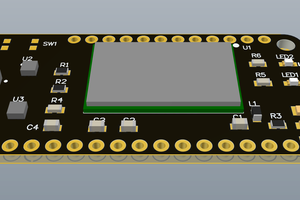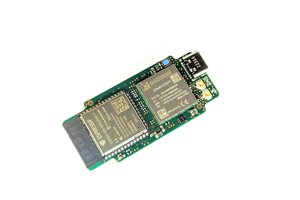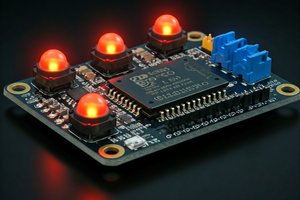Introduction
The project involves designing a PCB based on the ESP-12S module to create a WiFi repeater capable of extending the range of WiFi signals. This repeater will amplify and rebroadcast existing WiFi signals, effectively extending the coverage area. Multiple repeaters can be deployed to transmit data over long distances, providing enhanced connectivity within the project environment.
FOR FULL PROJECT:
https://electronicsworkshops.com/2024/02/27/cheap-esp-wifi-repeater/
Working Principle
The working principle of an ESP-12S based WiFi repeater involves receiving, amplifying, and retransmitting WiFi signals to extend the range of an existing WiFi network. Here’s a simplified explanation of how it works:
- Signal Reception: The ESP-12S module is configured to receive WiFi signals from an existing network. It acts as a client device, connecting to the network just like any other WiFi-enabled device such as a smartphone or laptop.
- Signal Amplification: Once the ESP-12S module receives the WiFi signals, it processes and amplifies them using its internal hardware capabilities. The module boosts the signal strength to ensure better coverage and reach.
- Rebroadcasting: After amplification, the ESP-12S module rebroadcasts the amplified WiFi signals as a new access point. It essentially creates a secondary WiFi network with extended coverage, allowing devices within its range to connect to the internet or local network.
Overall, the ESP-12S based WiFi repeater works by receiving, amplifying, and rebroadcasting WiFi signals to extend the range of an existing network, providing improved coverage and connectivity within its range.
Project Flow
To achieve your objectives of using multiple ESP-12S based WiFi repeaters to transmit data over long distances, you’ll need to design a system that can effectively extend WiFi range while maintaining reliable data transmission. Here’s how you can approach this project:
- ESP-12S Modules: Select ESP-12S modules for each WiFi repeater unit. These modules provide WiFi connectivity and are suitable for creating repeater functionality.
- Repeater Functionality: Develop or utilize firmware that allows the ESP-12S modules to operate as WiFi repeaters. This firmware should enable the modules to receive WiFi signals from an existing network, amplify them, and rebroadcast them to extend coverage.
- Mesh Networking: Implement a mesh networking protocol to facilitate communication between multiple WiFi repeaters. Mesh networking allows repeater units to dynamically route data between each other, effectively extending the range of the WiFi network.
- Optimized Antennas: Consider using external antennas with high gain to improve signal strength and extend coverage further. Proper antenna placement and orientation are crucial for optimal performance.
- Power Supply: Design a stable power supply system for the repeater units to ensure continuous operation. This may involve using voltage regulators and appropriate power sources depending on the deployment environment.
- Data Transmission Protocol: Choose a suitable data transmission protocol for your project requirements. Depending on the application, you may opt for protocols like TCP/IP or MQTT for reliable data transfer over WiFi.
- Enclosure and Mounting: Design enclosures for the repeater units to protect them from environmental factors and ensure durability. Considerations should be made for mounting options to facilitate installation in various locations.
- Testing and Optimization: Thoroughly test the repeater system in different environments and configurations to ensure it meets performance requirements. Optimize the system as needed based on testing results.
- Scalability and Expansion: Design the system with scalability in mind, allowing for the addition of more repeater units as needed to further extend WiFi coverage. Ensure compatibility and interoperability between units to support seamless expansion.
By following these steps, you can design and implement...
Read more » electronicsworkshops
electronicsworkshops
 CiferTech
CiferTech
 dbaughman1230
dbaughman1230
 Daan Pape
Daan Pape